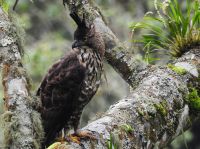16 facts about manatees
Manatees are gentle giants of the seas and oceans that fascinate with their unique nature and importance in aquatic ecosystems. These unique aquatic m ...
22 facts about hedgehogs
They share an ancestry with moles, shrews, and solenodons. Hedgehogs were introduced to Europe, Asia, Africa, and New Zealand, and currently cannot be ...
32 facts about tigers
This one of the largest terrestrial predators is a cunning, lone hunter, with perfect climbing and swimming skills. Equally fascinating and horrifying ...

























